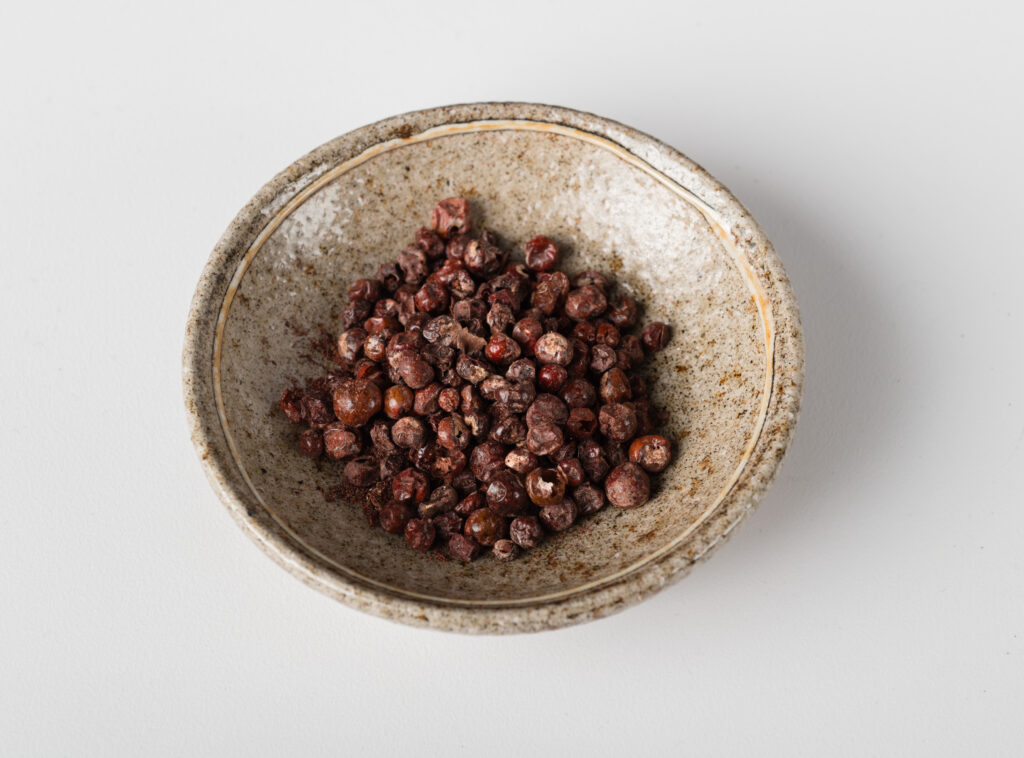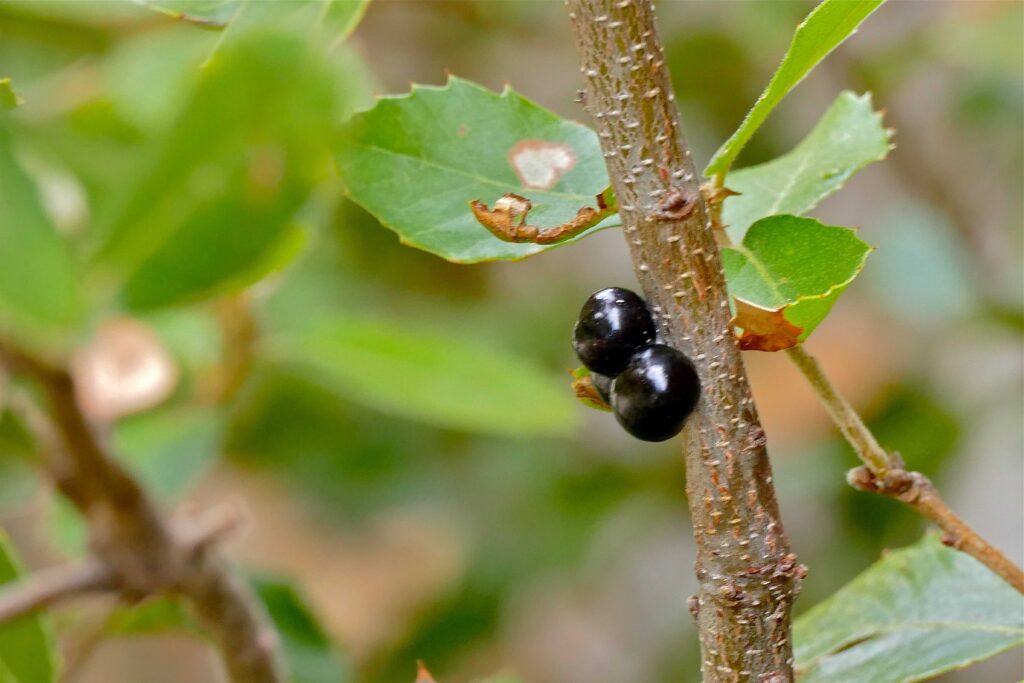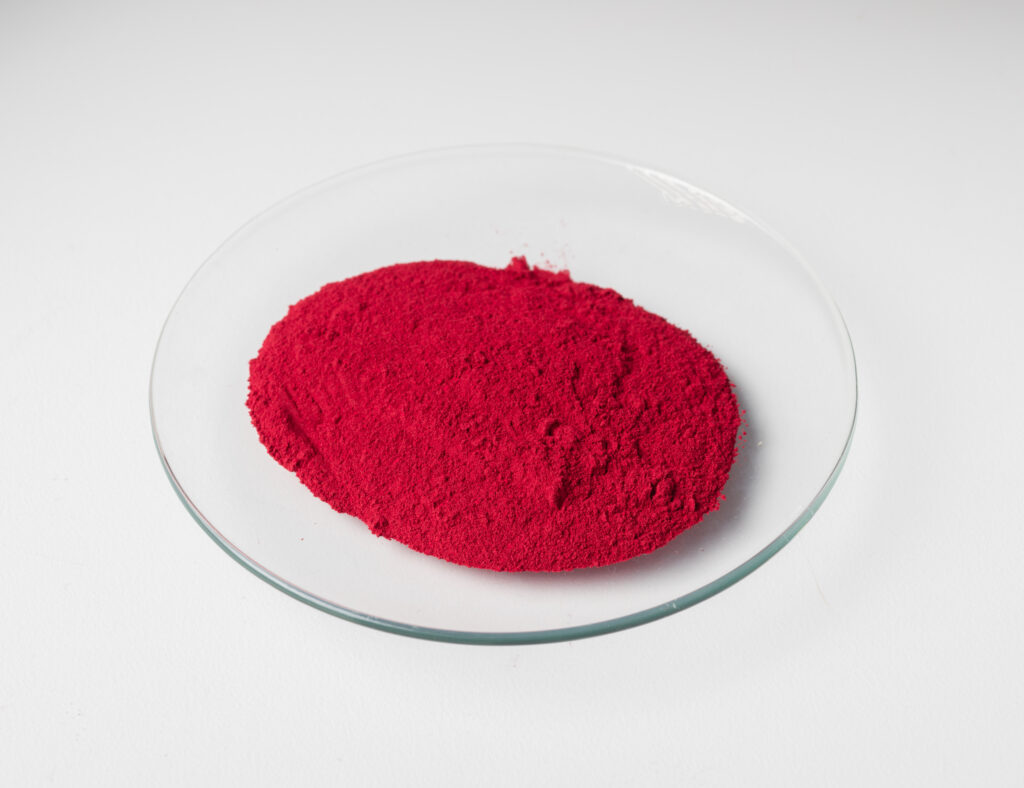Kermes (resource)
Dates of Use: Before 2000 BCE–rarely used today
Source: Natural organic dye from insects of the genus Kermes, primarily Kermes vermilio
Chemical Name: Kermesic acid
Formula: C16H10O8
- Kermes red is one of the oldest-known organic dyes. It comes from an insect that feeds on the sap of Mediterranean oak trees. The dye is obtained from the crushed, dried bodies of the female kermes insect.
- Kermes resists fading very well for a natural dye, but its color does fade over time.
- Kermes, like all dyes, can be made into paint by dyeing a colorless particle (such as chalk or alum). A pigment made from a dye is called a “lake.”
- Kermes was used for thousands of years in Asia and Europe, including ancient Egypt, ancient Mesopotamia, and ancient Greece.
Kermes dye comes from the kermes insect (pictured above). These insects feed on the sap of Mediterranean oak trees. The dye comes from the crushed, dried bodies of the female kermes insect. Collecting the insects is a labor-intensive and time-consuming task. It also has to be timed with the seasonal cycle of the insects.
Photography: Bernard Dupont
Kermes in History
Kermes was used for thousands of years in Asia and Europe. It was used in ancient Egypt, ancient Mesopotamia, and ancient Greece. Kermes is one the oldest-known organic dyes. Kermes is mentioned in the Old Testament and the New Testament of the Bible. It is believed that the Hebrews obtained kermes from the Phoenicians and used it to dye the curtains of their tabernacle. Kermes was highly valued throughout history. Ancient provinces in Spain, for example, used kermes to pay their annual tribute to Rome.
The name kermes comes from the Sanskrit word krmiza, which means worm-made. The color names carmine and crimson come from this root word. In medieval Europe the best kermes-dyed red cloth was called scarlet. Kermes was also called grana (grain) because it was often mistaken as a plant seed or berry. Highly prized kermes-dyed fabrics like silk and wool were described as being “dyed in the grain.” This gave rise to the term “ingrained.”
Kermes fell out of use quickly after cochineal was introduced to the world by the Spanish in the 16th century. Kermes and cochineal created very similar colors, but cochineal dye was about ten times stronger than kermes dye. This made it more economical to use, despite the fact that it was expensive to buy.



